In this NewsFlash, we discover how sharks sniff out a snack, the genes that stop you from waking up to eat and the honey trap for surveying viruses carried by mosquitoes. Plus, we explore the technology used in South Africa to make the World Cup safe and accessible, and look at the impact of the Deepwater Horizon oil spill on Louisiana's wetlands.
In this episode
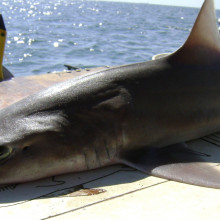
00:17 - How Sharks Sniff out a Snack
How Sharks Sniff out a Snack
Sharks are known for their ability to follow a scent in the water to their next meal - and now researchers in Florida have discovered how they do it.
Writing in Current Biology, Jayne Gardiner at the University of South Florida and Jelle Atema at Woods Hole Oceanographic Institute showed that sharks are able to detect very small delays in a scent reaching each nostril - and it's this, rather than the actual concentration of the chemical, that gives them their sense of direction.
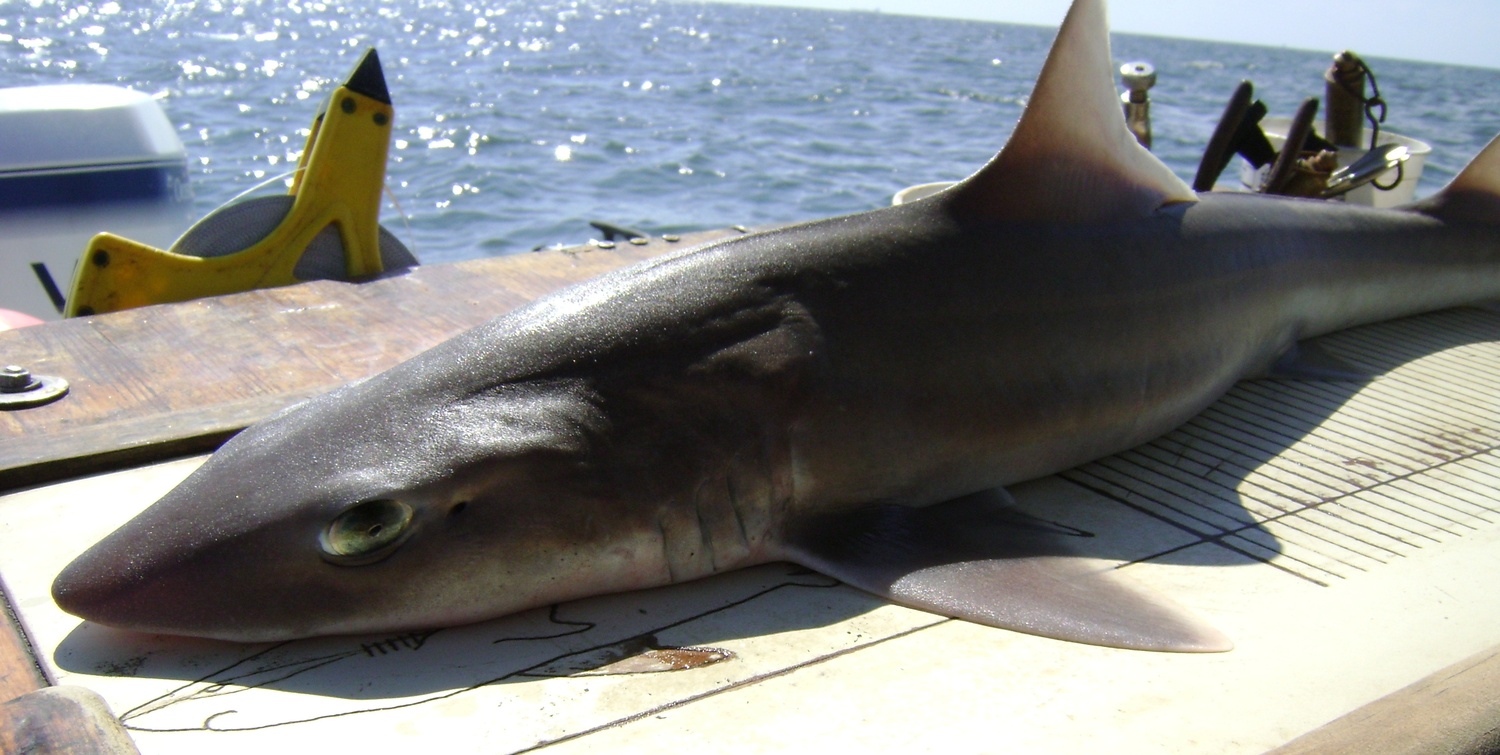 Most species that rely on scent are equipped with stereo sensors - 2 antennae on an insect or 2 nostrils on a dog for example. It's long been assumed that this means species can home in on the source of a scent using the concentration as a guide - if the scent is stronger on the left than the right, they simply turn 'into' the concentration gradient.
Most species that rely on scent are equipped with stereo sensors - 2 antennae on an insect or 2 nostrils on a dog for example. It's long been assumed that this means species can home in on the source of a scent using the concentration as a guide - if the scent is stronger on the left than the right, they simply turn 'into' the concentration gradient.
In reality, concentration gradients are rarely, if ever, that simple. When dispersed in air or water, chemicals are very unlikely to form a uniform gradient - instead existing in whirls or vortices, with peaks of concentration sometimes a long way from the source. This means that following a concentration gradient alone is likely to lead you in circles - not an efficient way to hunt.
Working with the smooth dog shark, Mustelus canis, the researchers introduced a scent to each nostril in controlled concentrations and with controlled time delays. They found that the timing of the pulses was most important, as the sharks would turn towards the first pulse, even if the second was of higher concentration. This seemed to break down when the delay was too large - over one second and the shark was just as likely to turn either way. This means that the sharks will weave from one side to the other, following the average concentration gradient without being waylaid by the small local concentration changes.
The researchers now want to follow this up, and see if wider spaced nostrils give a shark greater accuracy at higher speeds. Hammerhead sharks, with their distinctive flattened heads known as cephalofoils, have much greater separation between nostrils, so even though their olfactory organs are just as sensitive as other sharks, they may be better able to detect these time differences, and so hunt more efficiently.
This finding also has some very interesting other applications - it can be applied to underwater steering algorithms to allow unmanned robotic craft to quickly locate the source of a chemical, such as an oil leak, underwater.
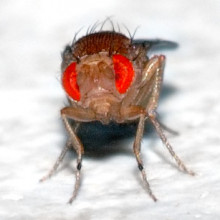
03:33 - Eat or sleep?
Eat or sleep?
It's the Homer Simpson dilemma - is it more important to eat or to sleep? If mammals are deprived of sleep, then they want to eat more to help stay awake, and being deprived of food, through starvation, keeps them awake - presumably to search for more food. But we don't know a lot about how this is controlled. Obviously, we need to strike the balance with enough of both, though you can combine them - I had a dream I was eating a giant marshmallow, and when I woke up my pillow had vanished!
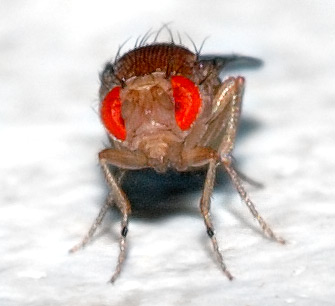 Anyway, now researchers in the US have uncovered some of the genes that control this balance in fruit flies, which may shed light on our own patterns of eating and sleeping.
Anyway, now researchers in the US have uncovered some of the genes that control this balance in fruit flies, which may shed light on our own patterns of eating and sleeping.
This is work from Alex Keene and his colleagues, published this week in the journal Current Biology. They've been looking at the sleeping and feeding cycles of tiny fruit flies, known as Drosophila. These are quite a handy model organism for this kind of study, as we know a lot about their daily rhythms, known as circadian rhythms.
The scientists discovered that starving fruit flies had a powerful effect on keeping them awake, the same as in mammals. And given that fruit flies share a lot of genes with humans and other mammals, this suggests that we might be able to unpick the genetic connections between sleeping and feeding using these little flies.
The scientists scanned through 2,000 genes in the flies, and found over a dozen that were involved in sleeping and feeding. Then they narrowed down their search to just two, called Clock and Cycle, which are also involved in flies' daily rhythms - they're also involved in daily rhythms in mammals, including humans. To find out more about the role of these genes, they looked at flies both with and without each gene, under starvation conditions, to find out how much they slept.
But how can you tell if a fly is sleeping or not? Well, the researchers monitored the flies' movements - if a fly isn't moving regularly, it's a pretty good bet it's asleep.
The scientists discovered that flies missing the Clock and Cycle genes had a three to four-fold reduction in sleep when they were starved, compared with genetically normal flies. This tells us that both the genes play an important role in helping the flies to sleep under starvation conditions, and probably help to co-ordinate the choice between sleeping and eating at any given time.
Because the clock and cycle genes are also found in humans, and have very similar roles, it may be that these genes also help us to co-ordinate eating and sleeping too. So further research with mammalian models and human cells might shed light on how to treat sleep disorders and metabolic and eating problems. But at the moment, this is just speculation, and more work needs to be done.
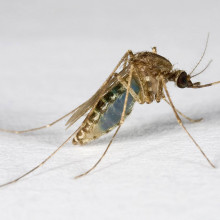
06:56 - Honey Trap to Detect Mosquito Pathogens
Honey Trap to Detect Mosquito Pathogens
Collecting mosquito saliva in honey can help to track the pathogens they carry, according to researchers in Australia.
Andrew Van Den Hurk at the University of Queensland and colleagues have published a report in the journal PNAS detailing how mosquitoes can be coaxed into leaving saliva samples in honey soaked cards. These cards can then be analysed to find any virus RNA present, giving you a precise guide to what viruses local mosquitoes are carrying, without ever having to handle a mosquito.
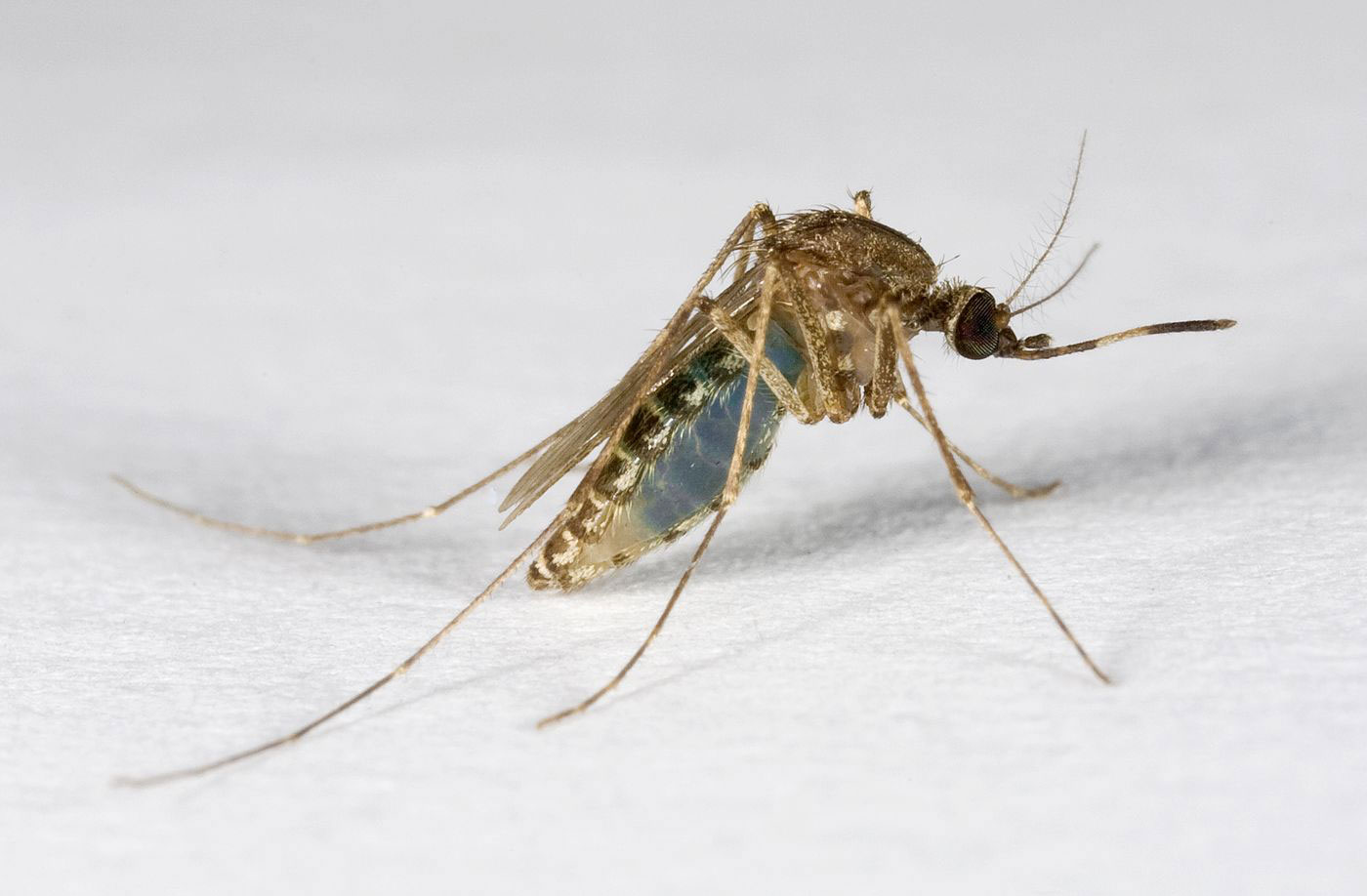 Arthropod-borne viruses, or arboviruses, are a global public health problem, and include things like Dengue, yellow fever and West Nile virus. Proper surveillance of these viruses is essential for disease control strategies such as vaccination, but present mosquito-based survey techniques are "expensive and logistically problematic" - involving collection and transport of live mosquitoes. Other survey methods involve disease diagnosis in infected patients or monitoring "sentinel" animals.
Arthropod-borne viruses, or arboviruses, are a global public health problem, and include things like Dengue, yellow fever and West Nile virus. Proper surveillance of these viruses is essential for disease control strategies such as vaccination, but present mosquito-based survey techniques are "expensive and logistically problematic" - involving collection and transport of live mosquitoes. Other survey methods involve disease diagnosis in infected patients or monitoring "sentinel" animals.
The honey trap method has several advantages. The honey soaked cards preserve viral RNA for at least seven days without refrigeration - even when tested in both temperate conditions (at a site near Bunbury in Western Australia) and tropical conditions (near the Northern Queensland city of Cairns).
The honey itself is an important part of the process, as it remains moist throughout the collection period - ensuring the mosquitoes have access to the liquid sugars that they find very attractive. Manuka honey also has antibacterial properties which help to protect viral RNA from bacterial RNAases, preserving the sample for long enough to be analysed.
In lab tests, by adding blue dye to the honey, the researchers could identify which mosquitoes had been feeding, and then compare evidence of virus on the card to traditional saliva samples - showing this method to be of similar or better accuracy to the traditional, more time consuming sampling methods. In fact, some virus particles were transmitted even without the mosquitoes consuming any honey, as an infected mosquito just probing a food source is enough to transmit a virus to a susceptible host.
This report shows that this novel technique works for Ross River virus, Barmah Forest virus, Chickungunya and West Nile virus, but the authors suggest that it could be expanded to detect malaria, or used with other virus vector species.
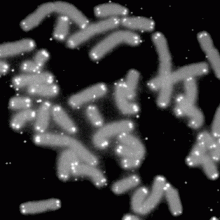
10:11 - DNA ends could hold key to leukaemia
DNA ends could hold key to leukaemia
Cancer is a disease that starts when cells become immortal and multiply out of control. Over the years, researchers have discovered that a crucial part in the process - for at least 8 out of 10 cancers - is the switching on of telomerase, a protein that makes telomeres, the 'caps' on the ends of our chromosomes (a bit like the plastic caps on the ends of shoelaces).
 Without telomerase, our telomeres get shorter and shorter, and eventually - when they get too short - the cell stops dividing. It's a bit like a molecular clock, counting down the lifetime of our cells. But cancer cells switch telomerase back on, so they can just keep multiplying.
Without telomerase, our telomeres get shorter and shorter, and eventually - when they get too short - the cell stops dividing. It's a bit like a molecular clock, counting down the lifetime of our cells. But cancer cells switch telomerase back on, so they can just keep multiplying.
Now new research from scientists in Cardiff, funded by the charities Cancer Research UK and Leukaemia & Lymphoma Research, have discovered that a certain type of leukaemia may actually develop as a result of telomerase not being active enough.
Led by Dr Duncan Baird, the scientists were studying samples from patients with chronic lymphocytic leukaemia, or CLL for short - this is a cancer that affects white blood cells, which multiply out of control. Writing in the journal Blood, the scientists used a new technique to precisely measure the lengths of telomeres in the cancer cells, and compared them to telomere lengths in blood cells from people without the disease.
They found that telomerase appears to be underactive in the cancer cells at the early stages of the disease, so the telomeres get shorter and shorter. At this point, you would expect the cells to stop dividing and die, but they don't.
Instead, the ends of the chromosomes start to stick together, causing strange genetic alterations that further fuel the development of cancer. But then the researchers think that telomerase get switched on at this point, immortalising the genetically weird cells, and fuelling the growth of cancer.
This is the first time that this process has been shown to happen in human cancer cells, so it's pretty important stuff. What's more, the research could potentially lead to a blood test for monitoring how fast leukaemia is progressing, by measuring telomere length, as well as helping doctors to decide on the best treatment, or speeding diagnosis.
Scientists are now trying to find out if this is involved in other cancers - they're looking at telomere length in other types of tumour, such as bowel cancer. At the moment, we don't have any results from this work. But if they find similar mechanisms at work, it could open up an exciting new avenue of research, which could lead to future cancer treatments or diagnostic techniques.

13:11 - World Cup Technology
World Cup Technology
Kelvin Kemm, Pretoria, South Africa
Meera - This week saw an historic moment in football, the kick-off of the First World Cup ever to be held in an African nation. I spoke to Kelvin Kemm from Pretoria in South Africa to find out what things are like over there and how science and technology is being used to make sure the games are as safe and accessible to as many people as possible in South Africa.
Kelvin - Well Meera, everybody's going World Cup mad here. On large TV masts and 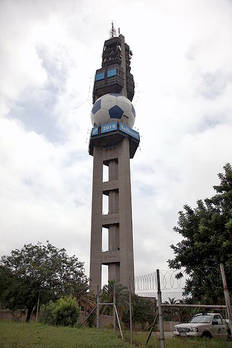 the cell phone masts there's huge soccer balls on the masts there. Everybody's got soccer balls all over the place. On every placard you can imagine there are soccer pictures. All the teams are arriving day by day and every team has been met at the airport and wave down the street. Everybody is riding around with flags out of their car windows, so you can't look anywhere now that there isn't soccer fever all over the place.
the cell phone masts there's huge soccer balls on the masts there. Everybody's got soccer balls all over the place. On every placard you can imagine there are soccer pictures. All the teams are arriving day by day and every team has been met at the airport and wave down the street. Everybody is riding around with flags out of their car windows, so you can't look anywhere now that there isn't soccer fever all over the place.
Meera - And have there been any particular science or technological developments in relation to the World Cup, say to help people watch it or even for security reasons?
Kelvin - There's been some interesting things. For example, one company has taken a number of solar powered television sets into far remote areas that are not electrified, so all our local villagers can to come along and sit and watch the World Cup on TV. Also, something else interesting is about the security as you mentioned. There's huge security coverage. For example, if a model airplane takes off, a radio controlled plane, and aims towards the stadium, the military and security command centre can detect that model airplane and crash it - if it goes on a path towards our soccer stadium. By radio jamming, they will jam the radio signals so the aircraft crashes.
And even base jumpers - every base jumper has got to be registered and can't jump within a certain radius of a stadium unless they get permission, which they won't get during a game.
 But large and small aircraft as well, every single aircraft from a small private airplane to the Boeing 747s has got to ask permission to cross a 100 kilometre radius around the game, every single time they cross, and we're talking about thousands of occasions. Each one has to be individually certified, and the planes all have to register beforehand so they know exactly who owns the aircraft and what it's doing. So any strange aircraft will be stopped.
But large and small aircraft as well, every single aircraft from a small private airplane to the Boeing 747s has got to ask permission to cross a 100 kilometre radius around the game, every single time they cross, and we're talking about thousands of occasions. Each one has to be individually certified, and the planes all have to register beforehand so they know exactly who owns the aircraft and what it's doing. So any strange aircraft will be stopped.
Something else too which the world can look forward to is the massive television coverage there is going to be - each stadium has got something like 32 cameras per game operated through a giant television coverage centre that has been specifically put aside for the soccer only. So it'll run 24 hours a day just sending TV all over the world. It'll be the largest international television traffic that's ever been sent out of South Africa is the coverage of the soccer.
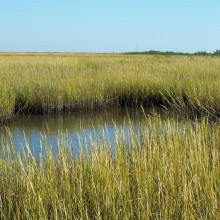
16:11 - Evaluating the Impact of Oil on Louisiana's Wetlands
Evaluating the Impact of Oil on Louisiana's Wetlands
Dr Robinson Fulweiler, University of Boston
Ben - As well as blanket football coverage, it's been very hard to miss news about the oil leak in the Gulf of Mexico. Estimates vary widely but it's thought that millions of gallons of oil have leaked into the ocean. But what impact will this have on the local environment? Dr. Robinson Fulweiler is a researcher at Boston University where she studies the wetland ecosystems such as those in Louisiana that are likely to bear the brunt of the oil damage. Robinson, thank you so much for joining us. First of all, what are the environments that you're looking at and what do they normally look like?
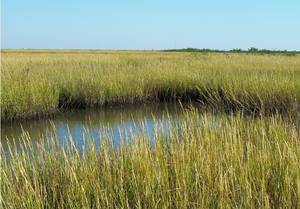 Robinson - We're particularly interested in the wetland environments. So these are sort of the grassy vegetative areas and they have lots of different types of vegetation both wetland grasses but mangroves as well, so they're very dynamic systems. Normally, we expect them this time of year to be growing a lot. There's lots of new shoots, so lots of bright green coming out. And of course, these environments are filled with lots of different animals, so a variety of birds, and fish, and snails, all different things.
Robinson - We're particularly interested in the wetland environments. So these are sort of the grassy vegetative areas and they have lots of different types of vegetation both wetland grasses but mangroves as well, so they're very dynamic systems. Normally, we expect them this time of year to be growing a lot. There's lots of new shoots, so lots of bright green coming out. And of course, these environments are filled with lots of different animals, so a variety of birds, and fish, and snails, all different things.
Ben - Okay, so quite a biodiverse area actually.
Robinson - Absolutely.
Ben - How do you go in there and assess an ecological impact of an event like an oil spill?
Robinson - That's a really good question and I think it's going to be a challenging one to answer. So, the first is that Louisiana's ecosystem - wetland ecosystems have really been studied for a long period of time. So we've got a lot of historical data from before the oil spill. Now, we're all about going in and trying to find areas that have been impacted and starting to measure certain things to see how is it changed from after the oil spill? So we collect samples and then bring them back to the lab for analysis.
Ben - And what sort of damage have we actually seen so far?
Robinson - It's tough to say. So in some cases, it's really obvious. When you pull the boat up on shore, you can see that the wetland grasses, their shoots are covered in the oil, and just to give you an idea of what that oil is like, it's kind of like when you make a sundae, it's got that caramel - melted caramel and hot chocolate. It's got that kind of texture to it, so it's really thick and gooey, sticky.
Ben - You're making it sound very appealing whereas I've imagined, oil isn't so nice.
Robinson - It's not delicious. You don't want to eat it. But it's just that's the only way I can describe how sticky it is. So it's covering a lot of the shoots of the grasses. You can see it on some of the animals themselves. Of course, you've seen those pictures of many of the birds and stuff, but when you go into the wetland, you can see it even on crabs and snails, and all over the plants. We even saw some dolphins that had it on their fin and that kind of thing.
At this point, we know that it's definitely coating the organisms and it's also coating the sediment layer, and I'm very interested in some of the organisms that you can't see, the microbial community and we know now that that oil is simply making a lid over all of the sediments and the grasses, and that's what we're trying to figure out how that will impact the system.
Ben - So what do we think can be done to remedy the damage that we've seen?
Robinson - That's another really tough question. There's actually been this great YouTube video that Irv Mendelssohn made and he's from Louisiana State University, so people could Google it, but he sits down and goes over all of the different ways we could try to remedy this situation, and there's probably three most common ways.
One is - and you've probably seen this on the news too - you can burn the oil off and they've been doing this in the open water. You could do that on the wetland too as long as there was a layer of water. So you'd burn that growing vegetation now, but you'd also get the oil off the land and if the oil hasn't seeped into the sediment, the roots should be able to regenerate and grow again. So you could do that.
Another thing is to add nutrients and if you could add things like nitrogen and phosphorus, you can stimulate the biological activity of the wetland and help the microbial community break down the oil.
And then probably the third way is just to sort of let it take its course and over time, the thought is that over time, the oil will start to degrade and go away.
Ben - Okay, so none of them are an immediate fix of course, but why are these environments so important to us? We've discussed the fact that there's a great deal of biodiversity, but wetlands are also very important for the local people living there. But also on a countrywide scale, wetlands are vitally important.
Robinson - Sure. I mean, this is really a major cultural, natural, and economical piece of land here for the United States and I think really for the world as a whole. The wetlands are important for a lot of the fish species that we like to eat, so the commercial species that are good. Then of course, they're important for birds and lots of nursery habitats.
But they're also important for things that we tend not to think too much about like the filtering of nutrients. So they can act as a filter to remove things like nitrogen and phosphorus that humans put into the environment. And so, that's kind of an ecosystem service that maybe it goes overlooked and is really important, and we imagine that putting the oil on these wetlands will change how they filter nutrients.
Ben - So it could have slightly longer term and more economic impacts than we actually thought. Robinson, thank you ever so much for joining us. That was Dr. Robinson Fulweiler from Boston University. She's been down to Louisiana to assess the ecological impact of the Gulf of Mexico oil spill.










Comments
Add a comment